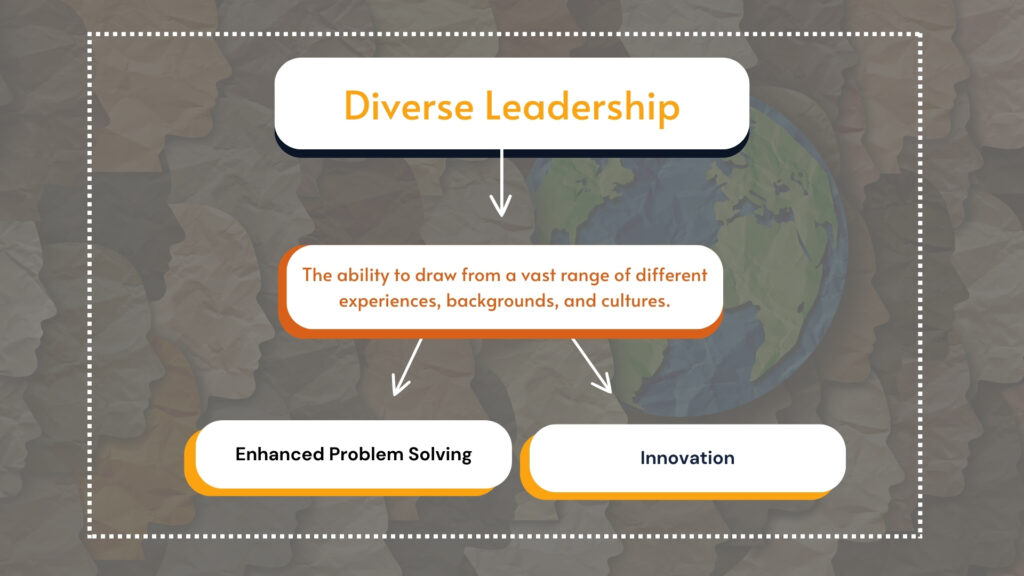“A diverse mix of voices leads to better discussions, decisions, and outcomes for everyone.” – Sundar Pichai
To start, what does leadership currently look like in the U.S.?
While many U.S. companies are making strides toward a more diverse workforce, leadership remains largely homogenous. This lack of diversity at the top not only affects current employees but also deters future job seekers and negatively impacts the overall health and innovation of the company.
Here are a few stats that put into perspective just how much diverse leadership is lacking in today’s workforce:
- Women hold only 6.6% of Fortune 500 CEO roles, despite this being an “all-time high,” according to LinkedIn Learning.
- A Washington Post study revealed that just 8% of top executives at the 50 most valuable public companies are Black.
- A Beamery survey found that only 40% of companies have extended DEI initiatives to the C-suite.
- According to Harvard Business Review, 78% of employees believe their organizations lack diversity in leadership.
These figures highlight the urgent need for more inclusive leadership to drive meaningful change and growth that aligns with the changing demographics of the workforce.
Why Is Diverse Leadership Important?
Diverse leadership fosters a safer, more inclusive environment and can significantly enhance creativity and engagement. By including individuals with varied and intersecting identities, leadership teams can draw from a broad range of experiences, backgrounds, and cultures. This variety of perspectives sparks innovation and problem-solving, leading to fresh solutions and improvements across all aspects of the business.

For employees, diverse leadership is crucial because it reflects the changing diversity in society. It builds trust and shows that the company values and represents its workforce. As more people prioritize diversity and inclusion in their job searches, having a diverse leadership team becomes increasingly important. LinkedIn found that 76% of employees and job seekers consider diversity a key factor when evaluating job offers.
Moreover, diverse leadership signals a genuine commitment to diversity, equity, and inclusion (DEI). It’s challenging for a company to champion DEI if its leadership team is homogenous. Clients also notice this. For client-facing businesses, diverse leadership helps attract a broader clientele, as customers want to feel heard, accepted, and represented. A leadership team that reflects a variety of demographics—such as gender, race, ethnicity, and age—strengthens client trust and loyalty.
There are also financial advantages. Drury University reports that companies with inclusive teams are 36% more profitable than those without. Varied perspectives enable companies to better reach and serve a diverse audience.
Diverse leadership isn’t just a moral choice—it’s a strategic advantage that enhances company culture, boosts employee satisfaction, strengthens client relationships, and improves financial performance.
In Conclusion
The U.S. is evolving rapidly, and businesses that don’t prioritize DEI (Diversity, Equity, and Inclusion) may find themselves lagging behind. If leadership teams don’t reflect the diversity of today’s workforce, they could miss out on valuable connections and opportunities. As both the workforce and customer base become more diverse, not adapting could have serious long-term impacts.
To remain competitive and prepared for the future, companies must embrace diverse leadership, as the future favors those who lead with inclusion. If you’re looking to cultivate inclusive leadership and ensure you’re taking the right steps to recruit diverse talent, the Project 2043 Institute is here to support you. Please contact us today.

 Why Are We So Different? Navigating the Multigenerational Workplace
Why Are We So Different? Navigating the Multigenerational Workplace